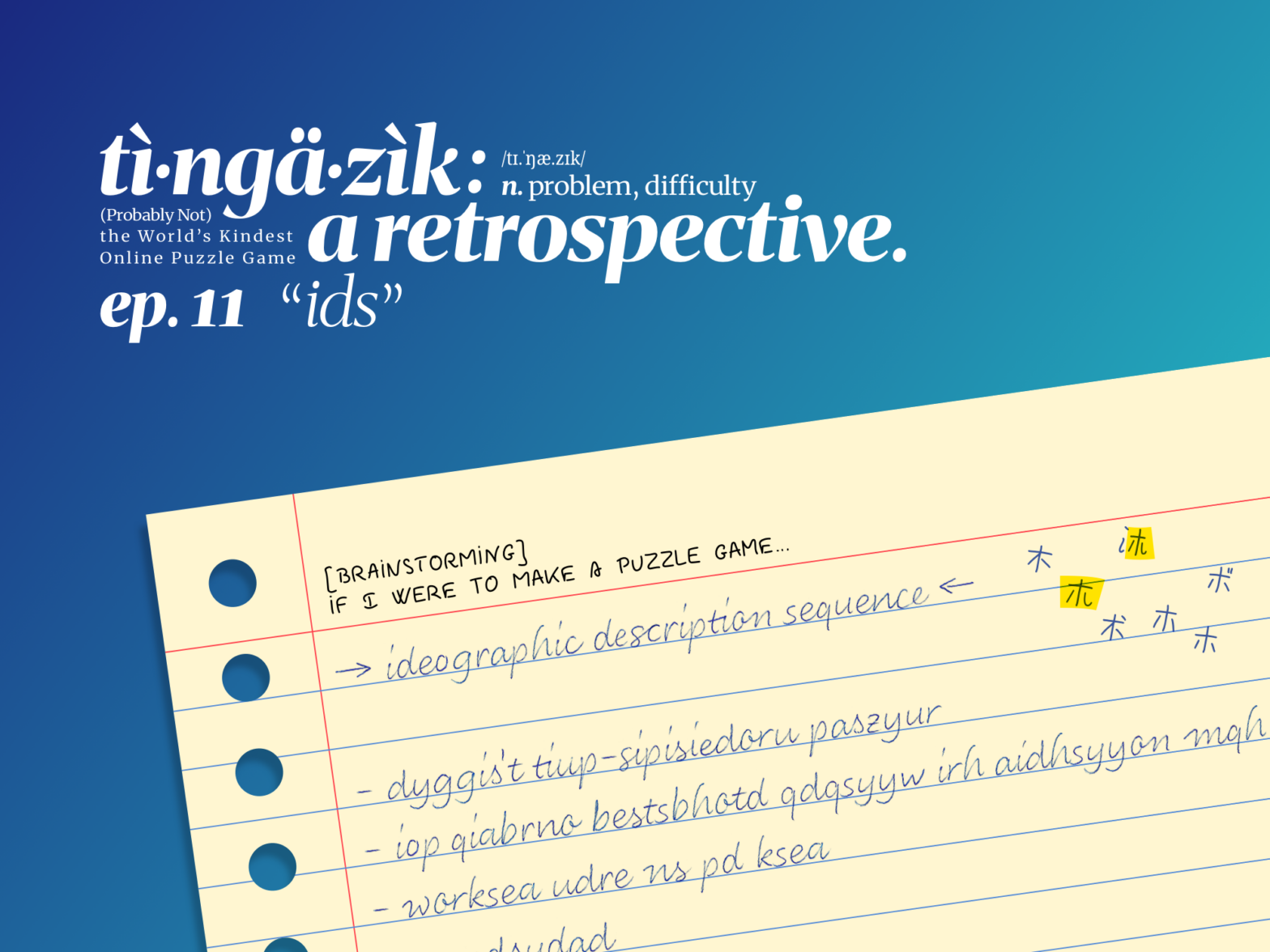IDS #chinese #unicode
Expected solvable difficulty
-
1sample+: experienced solvers with CJK proficiency -
keywords+: most solvers
Level design
Ideographic Description Sequences (IDS) is a standard defined by Unicode that describe the composition of Hànzì. For example, 明 (bright) can be expressed as ⿰日月. This standard is commonly used to express characters in digital media that are not yet defined in Unicode. Source Han Serif included a “ligature” of ⿺ 辶⿳穴⿰月⿰⿲⿱幺長⿱言馬⿱幺長刂心 to represent the character 𰻞 (a name to a noodle dish in China) when released. The character was later included in Unicode as U+30EDE.
The main question is picked from various IDS databases such that the Hànzì in the question falls in the Basic Multilingual Plane, while a component of the character is not. In this case, 㳈 should be broken down as ⿰氵𣎳, instead of ⿰氵木, ⿰氵术 or ⿰氵朩.
Expected thought process
Realize that the question is asking for IDS of the Hànzì in the question (1sample+), and search for IDS databases online. Several databases and tools can be found for this purpose:
- https://github.com/cjkvi/cjkvi-ids
- https://www.chise.org/ids-find
- https://glyphwiki.org/web/idsedit/idsedit.html
- https://zi.tools/
Using any of the tools to find the IDS of the question as the answer.


Leave a Reply